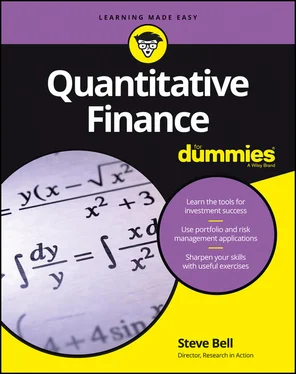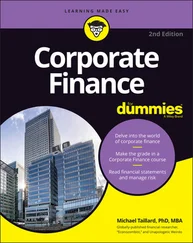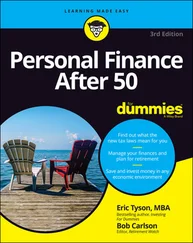Just as in the futures market, the variety of option contracts available has proliferated. Initially, most options were share options, but they soon found use in the foreign exchange and bond markets. You can also buy commodity options such as for crude oil, which have proved very popular too.
New option styles have also been introduced. In this book, I stick to what are known as plain vanilla contracts which give the holder the right, but not the obligation, to buy or sell an underlying asset at a predetermined price (the strike price ) at a specified time in the future. In the plain vanilla contract, the option payoff (the amount that you may get paid when the contract expires) depends only on a single strike price (the price that has to be reached for there to be any payoff to the option) whereas for barrier options, and other more complicated options, other prices are involved too.
THE 2008 BANKING CRISIS IN A NUTSHELL
In September 2008, the US investment bank Lehman Brothers filed for bankruptcy. This event was the first time in decades that a major US bank had collapsed. In the UK, major retail banks had to be bailed out by the government, and in Germany the second largest bank, Commerzbank, was partly nationalised.
These banks were deemed too big to fail , meaning that the government felt compelled to intervene fearing that allowing the banks to fail would create a crisis across the entire banking system.
This financial crisis was a complicated event (you can find whole books on it – not just a paragraph) but it boils down to the fact that the banks lent way too much money and lent some of it to people who were unlikely ever to pay it back. You can be forgiven for thinking they just weren’t doing their job properly.
A lot of this lending was done using mortgage-backed securities . These securities are a bit like bonds where the coupon payments and final principal repayments come from a portfolio of residential mortgages. By ingenious methods, the banks made these securities appear less risky than they really were. These methods allowed the bank to earn yet more fees from the lending but at the expense of building a financial time bomb.
Finally, credit derivatives give protection against defaulting loans. The most common of these derivatives are credit-default swaps in which the buyer of the swap makes a regular series of payments to the seller; in exchange, the seller promises to compensate the buyer if the loan defaults.
 Derivatives are useful because market participants who can’t bear certain risks can shift them (at a price) to someone who can. As a whole though, trading in derivatives can lead to risk being concentrated in a small number of dealers with fatal consequences for the likes of Lehman Brothers. As the investor Warren Buffett presciently observed years before the 2008 crisis, ‘derivatives are financial weapons of mass destruction’.
Derivatives are useful because market participants who can’t bear certain risks can shift them (at a price) to someone who can. As a whole though, trading in derivatives can lead to risk being concentrated in a small number of dealers with fatal consequences for the likes of Lehman Brothers. As the investor Warren Buffett presciently observed years before the 2008 crisis, ‘derivatives are financial weapons of mass destruction’.
Despite the explosive possibilities inherent in the derivatives market, the use of derivatives continues because of the constant need to mitigate financial risks. Better regulation will hopefully reduce the nasty accidents that have happened.
Analysing and Describing Market Behaviour
Quantitative finance is primarily about prices, but because markets are almost efficient, price changes are almost random. Also, you may be interested in not one price but many prices – all the prices in an investment portfolio, for example. I explain some of the statistical tools that you can use to deal with this problem in the next sections.
Measuring jumpy prices
The measure of the jumpiness of prices is called volatility . Chapter 7is all about volatility and the different ways that you can calculate it. Normally price changes are called returns even if they’re negative, and the volatility is the standard deviation of these returns. The higher the volatility, the jumpier the prices.
Because of the instability of financial markets, volatility is constantly changing. Prices can go through quiet spells but then become very jumpy indeed. This means that calculating volatility isn’t as simple as calculating a normal standard deviation, but Chapter 7shows you how.
Keeping your head while using lots of data
Most financial institutions are trading, selling or investing many different financial assets, so understanding the relationships between the prices of these assets is useful. In Chapter 9, I show you a special technique for gaining this understanding called principal components analysis (PCA). This technique helps because it can point out patterns and relationships between assets and even help you build predictive models. This is no mean feat given the almost random changes in asset prices, but PCA can do it.
Valuing your options
Black-Scholes is the equation that launched a thousand models. Technically, it’s a partial differential equation for the price of an option. The reason you need such a complicated equation to model the price of an option is because of the random nature of price movements. Chapter 10is the go-to place to find out more about Black-Scholes.
 If you’re a physicist or chemist, you may recognise part of the Black-Scholes equation as being similar to the diffusion equation that describes how heat moves in solids. The way you solve it is similar, too.
If you’re a physicist or chemist, you may recognise part of the Black-Scholes equation as being similar to the diffusion equation that describes how heat moves in solids. The way you solve it is similar, too.
An option gives you the right, but not the obligation, to buy or sell a financial asset, such as a bond or share, at a time in the future at a price agreed now. The problem is that because prices move in random fashion you have no idea what the price will be in the future. But you do know how volatile the price is, and so from that you have an idea what range the future price is in. If the asset price is highly volatile, the range of possible future prices is large. So, the price of an option depends on the following factors:
❯❯ The risk-free rate of interest
❯❯ The volatility of the asset
❯❯ The time to expiry
❯❯ The strike price
The Black-Scholes equation makes assumptions about the statistical distribution of the asset returns. You can find the details of this geometric Brownian motion model in Chapter 3. Chapter 10, gives you an alternative way of calculating option prices using probability theory. You don’t need the complicated partial differential equation to do this, but you still need the maths that you can find in Chapter 2.
You even have a third way to calculate option prices using simulation . With a simulation, you use the idea that asset prices follow a random walk and use your computer to generate lots of paths that the price may take in the future. From this, you can calculate the probability of the price hitting the strike price. You use this probability to work out today’s price for the option.
Managing Risk
Quantitative finance and the associated futures and option contracts provide the tools for managing financial risk. With futures, you can fix the price now of purchases or sales that you know you need to make in the future. Options can give you more flexibility in protecting yourself against adverse price movements, but the drawback is that you have to pay a premium up front.
 To quantify the overall riskiness of a portfolio of risky financial assets, you can use the Value at Risk (VaR) number. VaR is widely used by fund managers, banks and companies using derivatives. It gives senior managers an indication of how much risk they’re taking on. Regulators use VaR to figure out how much capital a bank must hold. Chapter 15explains this measure.
To quantify the overall riskiness of a portfolio of risky financial assets, you can use the Value at Risk (VaR) number. VaR is widely used by fund managers, banks and companies using derivatives. It gives senior managers an indication of how much risk they’re taking on. Regulators use VaR to figure out how much capital a bank must hold. Chapter 15explains this measure.
Читать дальше

 Derivatives are useful because market participants who can’t bear certain risks can shift them (at a price) to someone who can. As a whole though, trading in derivatives can lead to risk being concentrated in a small number of dealers with fatal consequences for the likes of Lehman Brothers. As the investor Warren Buffett presciently observed years before the 2008 crisis, ‘derivatives are financial weapons of mass destruction’.
Derivatives are useful because market participants who can’t bear certain risks can shift them (at a price) to someone who can. As a whole though, trading in derivatives can lead to risk being concentrated in a small number of dealers with fatal consequences for the likes of Lehman Brothers. As the investor Warren Buffett presciently observed years before the 2008 crisis, ‘derivatives are financial weapons of mass destruction’. If you’re a physicist or chemist, you may recognise part of the Black-Scholes equation as being similar to the diffusion equation that describes how heat moves in solids. The way you solve it is similar, too.
If you’re a physicist or chemist, you may recognise part of the Black-Scholes equation as being similar to the diffusion equation that describes how heat moves in solids. The way you solve it is similar, too.










